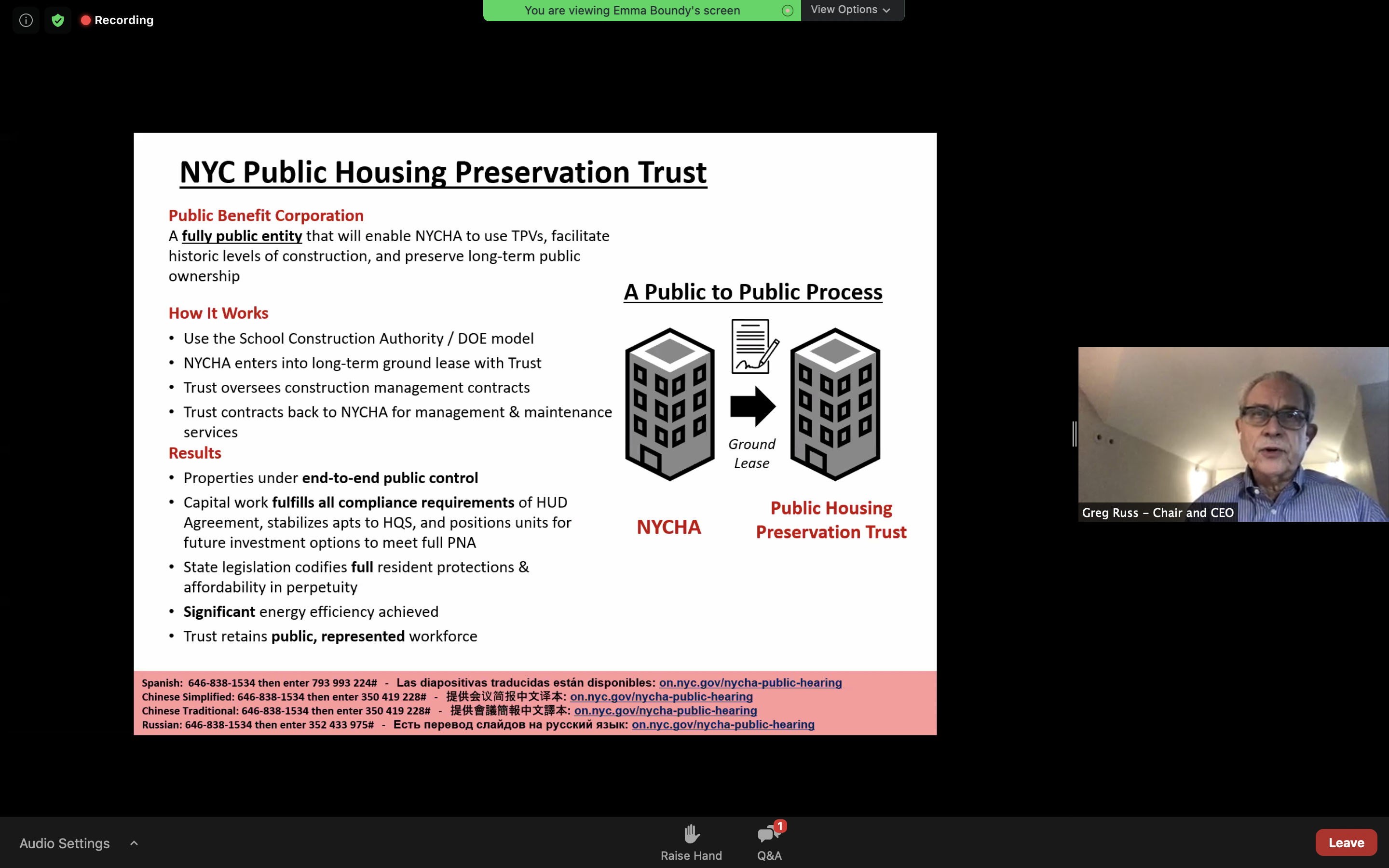NYCHA CEO gets razzed over Blueprint for Change
Residents, politicians and union workers responded angrily to the New York City Housing Authority’s controversial Blueprint for Change at a publicly Zoomed meeting on Dec. 8, arguing that the plan will disenfranchise many of the city’s vulnerable.
NYCHA hosted a public hearing to publicize the Blueprint, a plan to radically reconfigure the way 110,000 publicly-funded apartments classified as affordable housing, are managed. Although the hearing was originally arranged to consider NYCHA’s draft 2021 fiscal plan, the controversial Blueprint quickly stole the spotlight.
Roughly 35 members of the public spoke out at the event, the first online public hearing the Housing Authority has held since the COVID-19 pandemic started. Almost all panned NYCHA’s Blueprint.
NYCHA CEO and Chair Gregory Russ said the authority will need $18 billion to stabilize its developments’ infrastructure across the city. Revamping community centers, landscapes and facades will cost an additional $7 billion, he added.
But when the Blueprint for Change was brought up for discussion, along with the recognition that implementing it will call for the creation of a new public entity—the Public Housing Preservation Trust, to convert all of NYCHA’s Section 9 housing to Section 8–emotions boiled over. The Blueprint draft plan vows that “repairs and improvements would be made faster, and the properties would receive more funding.”
Section 8 is a voucher program, enabling New Yorkers looking for housing on the private market to receive a subsidy of about 40% from NYCHA.
The Housing Authority would still own its developments across the city, but the newly established Trust would hold long-term leases on the buildings, said Russ.
“There’s no private owner involved in this,” he said. “The Trust is a public entity and retains the property for the sole public purpose of investment, finance and repair.”
Despite those assurances, no member of the public who spoke out supported the Blueprint.
While NYCHA’s Director of Resident Engagement Janelle Hudson said The Authority has held several virtual town halls to discuss the plan since it was announced in June, many of the Dec. 8 event’s attendees said they were were left out of preliminary discussions when the plan was being drawn up.
Some questioned why such a massive housing policy change is being considered during a once-in-a-century public health crisis.
“It is unfair to go forward with any plans during a pandemic, especially when the residents don’t have the devices, or the Wi-Fi or the hotspots to engage,” said public housing resident Karen Blondel.
Manhattan Borough President Gale Brewer agreed.
“Virtual town halls are not accessible to everybody,” said Brewer.
Josh Barnett, an architect in the Civil Service Technical Guild Local 375 who works with NYCHA, said that although some details of the Blueprint make sense, the Authority isn’t safeguarding civil servant positions or union workers.
“When I started at NYCHA, there was almost 16,000 employees,” he said. “We’re down to under 12,000 now, and it’s hard to see how the plan would reverse that.”
Citywide Council of Presidents Chair and Melrose’s Andrew Jackson Houses tenant president Daniel Barber said his group has opposed the Blueprint for Change from the instant it was first announced earlier this year.
“We will not be bullied, and we will not be pushed and forced to go with what the Housing Authority wants us to go with,” said Barber.

